
The Mansion, Berkhamsted is a historic property on Castle Hill in Berkhamsted. It is a Grade II Listed building. [1]

The Mansion, Berkhamsted is a historic property on Castle Hill in Berkhamsted. It is a Grade II Listed building. [1]
The house was designed by George Hubbard and built by H and J Matthews between 1906 and 1908 for Sir John Evans. [1] [2] Evans was a well known archaeologist and geologist who became President of the Geological Society of London. [3] Evans called the house Britwell but, after his death 1908, it was bought by Sir Arthur Cory Wright, a businessman, who renamed it Berkhamsted Hill. [4]
The house was bought by the Deen family in 1919 and by Sir Richard Ashmole Cooper, a businessman, in 1937. [4] After Cooper's death in 1946, the house was acquired by his family chemicals business which itself was bought by the Wellcome Trust in 1959. [4] The house next came into the ownership of the Pitman-Moore Company, a pharmaceuticals business, who had no further use for it after 1991. [4] Now known as "the Mansion", [1] it became the centre point of a retirement facility known as "Castle Village" in 1999. [5]
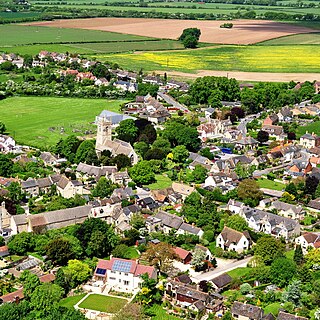
Oxfordshire is a ceremonial county in South East England. The county is bordered by Northamptonshire and Warwickshire to the north, Buckinghamshire to the east, Berkshire to the south, and Wiltshire and Gloucestershire to the west. The city of Oxford is the largest settlement and county town.

Berkhamsted is a historic market town in Hertfordshire, England, in the Bulbourne valley, 26 miles (42 km) north-west of London. The town is a civil parish with a town council within the borough of Dacorum which is based in the neighbouring large new town of Hemel Hempstead. Berkhamsted, along with the adjoining village of Northchurch, is encircled by countryside, much of it in the Chiltern Hills which is an Area of Outstanding Natural Beauty (AONB).
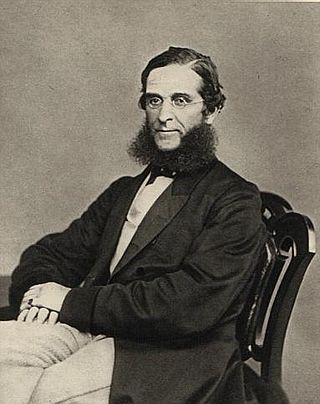
Sir John Evans was an English antiquarian, geologist and founder of prehistoric archaeology.

Witanhurst is a large Grade II* listed 1930s Georgian Revival mansion on 5 acres (2.0 ha) in Highgate, North London. It has had several prominent owners since being rebuilt by soap magnate Sir Arthur Crosfield. After several decades of increasing dilapidation, it underwent substantial refurbishment after its 2008 sale to an offshore company owned by the family of Russian businessman Andrey Guryev.

Stargroves is a manor house and associated estate at East Woodhay in the English county of Hampshire. The house belonged to Mick Jagger during the 1970s and was a recording venue for the Rolling Stones and various other rock bands, as well as a filming location for Doctor Who.

Bellevue Hill is a harbourside suburb in the eastern suburbs of Sydney, in the state of New South Wales, Australia, located five kilometres east of the Sydney central business district, in the Municipality of Woollahra.

Gunnersbury Park is a park between Acton, Brentford, Chiswick and Ealing, West London, England. Purchased for the nation from the Rothschild family, it was opened to the public by Neville Chamberlain, then Minister of Health, on 21 May 1926. The park is currently jointly managed by Hounslow and Ealing borough councils. A major restoration project funded by the Heritage Lottery Fund was completed in 2018. The park and garden is Grade II listed.

The Royal Indian Engineering College was a British college of Civil Engineering run by the India Office to train civil engineers for service in the Indian Public Works Department. It was located on the Cooper's Hill estate, near Egham, Surrey. It functioned from 1872 until 1906, when its work was transferred to India.

Moor Park is a Neo-Palladian mansion set within several hundred acres of parkland to the south-east of Rickmansworth in Hertfordshire, England. It is called Moor Park Mansion because it is in the old park of the Manor of More. It now serves as the clubhouse of Moor Park Golf Club.

Langleybury is a country house and estate in Abbots Langley, Hertfordshire, England, about 3 miles (5 km) northwest of the centre of the town of Watford. The house stands on a low hill above the valley of the River Gade.
Dorton House, formerly known as Wildernesse, is a Grade II listed Georgian mansion house in Seal, Kent, near Sevenoaks; until 2013 it was used as the headquarters for the Royal London Society for the Blind (RLSB) and as housing for the blind and partially sighted children who attended its school.
Doughty House is a large house on Richmond Hill in Richmond, London, England, built in the 18th century, with later additions. It has fine views down over the Thames, and both the house and gallery are Grade II listed buildings. This view from Richmond Hill is the only view in England protected by an Act of Parliament.

Hawkstone Hall is a 43,400 square feet (4,030 m2) early 18th-century country mansion near Hodnet and Weston-under-Redcastle, Shropshire, England which was more recently occupied as the pastoral centre of a religious organisation for many years. It is a Grade I listed building.

Berkhamsted Place was an English country house which was erected sometime around 1580 in Berkhamsted, Hertfordshire, England. It was built by Sir Edward Carey, the keeper of the Jewels to Queen Elizabeth I from stones removed from Berkhamsted Castle. Several notable residents of Berkhamsted lived in the house and over the years its owners welcomed guests such as King Charles I and William Gladstone.
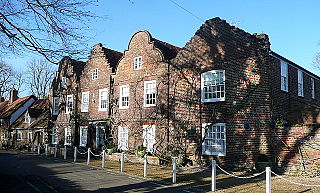
Hills House is a 17th-century residence located on the Village Road in Denham, Buckinghamshire, England. In the late 1930s and early 1940s, it was the home of actress Merle Oberon and her husband, the film producer Sir Alexander Korda. In 1975 the house was purchased by Sir John and Lady Mills.

Rossway Park Estate is a 1,000-acre (400 ha) country estate located about 0.5 kilometers south of Berkhamsted in Hertfordshire, England. The house at the centre of the estate is a Grade II listed building.

Ashlyns Hall is a country house at the edge of Berkhamsted in Hertfordshire, England. It is a Grade II* listed building.
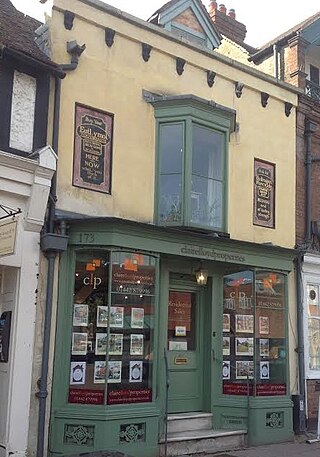
173, High Street, Berkhamsted, is a medieval building in Hertfordshire, England. It is considered to be the oldest extant jettied timber framed building in Great Britain, dated by dendrochronology of structural timbers to between 1277 and 1297. At the time of the building's construction, the town of Berkhamsted was a relatively large, flourishing wool trading market town that benefited from having an important royal castle.

Lamorbey Park is a 57-hectare (140-acre) park in Lamorbey, in the London Borough of Bexley, set around a Grade II listed mansion, Lamorbey House. The original 17th century estate consisted of 119 hectares, but over time sections of the estate have been separated for other uses, including two secondary schools, Rose Bruford College, and Sidcup Golf Club. The area of the park still in public ownership includes The Glade, a 7.4-hectare (18-acre) area of historic landscape laid in the 1920s with a large lake. The park was added to the Register of Historic Parks and Gardens of special historic interest in 1988.
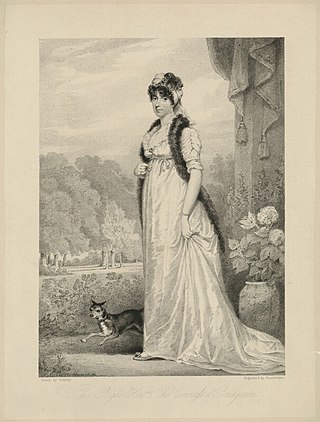
Charlotte Catherine Anne, Countess of Bridgewater, née Charlotte Haynes, was a British noblewoman. She was known for her philanthropic and charitable acts, and supported numerous educational and religious causes. She was responsible for the laying out of the ornamental gardens around her family home at Ashridge in Hertfordshire.